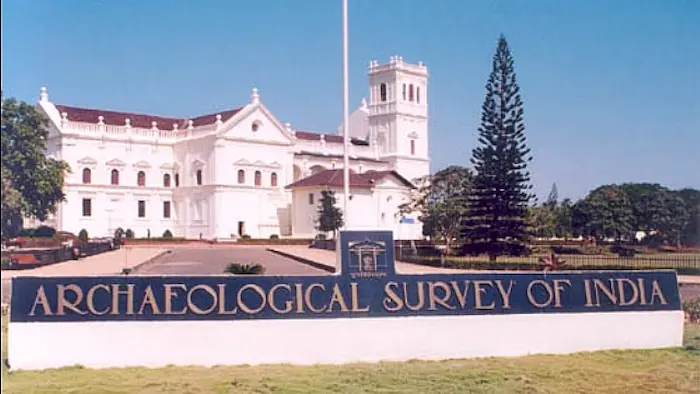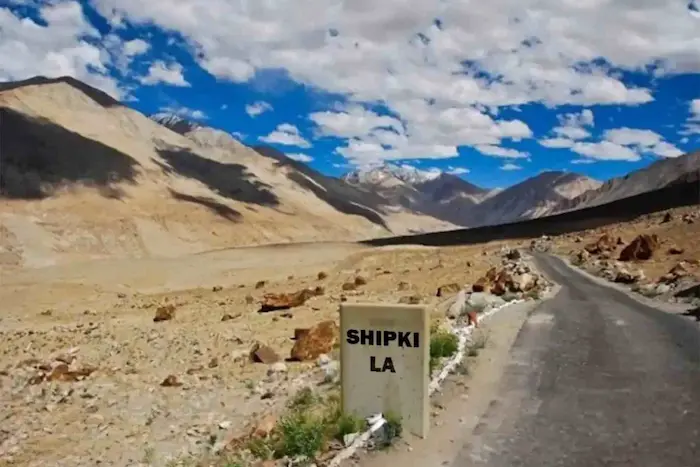1. Psephology – Polity

Why in News?
- The Supreme Court has stayed criminal proceedings against psephologist Sanjay Kumar over a social media post that incorrectly analyzed the upcoming 2024 Maharashtra Assembly Elections.
What is Psephology?
- Definition: Psephology is a specialized branch of political science that studies the scientific analysis of elections and polls.
- Methods:
- Use of statistical tools to analyze voting data.
- Reliance on opinion polls, surveys, campaign studies, and historical data.
- Helps in predicting election outcomes and understanding voter behavior.
Key Features of Psephology
- Quantitative Analysis: Focuses on measurable data (votes, turnout, opinion polls).
- Voter Behavior Study: Helps identify patterns such as caste, religion, gender, and regional voting trends.
- Application in India:
- No formal position called “Psephologist”.
- Political parties employ analysts for election strategy.
- Media editors and political commentators often function as psephologists.
- Relevance:
- Crucial in modern democracies to understand electoral dynamics.
- Shapes campaign strategies and political messaging.
Significance
- Provides scientific insights into how and why people vote.
- Helps predict election results, though accuracy depends on quality of data.
- Enhances transparency and understanding of electoral politics.
- Supports policy-making by highlighting voter priorities and concerns.
Exam Connect – Possible Questions
Prelims
1. Consider the following statements about Psephology:
1. It is a branch of political science dealing with the statistical study of elections.
2. It only deals with opinion polls and excludes historical voting data.
3. In India, psephology is an officially recognized profession under the Election Commission.
Which of the above statements is/are correct?
A. 1 only
B. 1 and 2 only
C. 2 and 3 only
D.1, 2 and 3
Answer: A. 1 only
2. The term Psephology is derived from a Greek word that refers to:
A. Ballot stones used in ancient Greek elections
B. Democratic assemblies in Athens
C. Political leadership
D. Written constitution
Answer: A. Ballot stones used in ancient Greek elections
Mains
- Discuss the significance of Psephology in strengthening democratic processes in India.
- “Psephology can predict electoral trends but not guarantee accuracy.” Critically examine this statement with examples.
2. Anamalai Tiger Reserve (ATR) – Environment

Why in News?
- A year-long study by the Tamil Nadu Forest Department revealed that at least eight different species of fireflies are found in the forests of the Anamalai Tiger Reserve (ATR).
- This highlights the ecological richness and importance of biodiversity conservation in the region.
About Anamalai Tiger Reserve (ATR)
- Location: Anamalai Hills, Tamil Nadu – spanning Pollachi and Coimbatore districts.
- Altitude: ~1400 m.
- Designation: Declared a tiger reserve in 2007.
- Situated south of the Palakkad Gap in the Southern Western Ghats.
Bordering Protected Areas:
- East → Parambikulam Tiger Reserve (Kerala)
- Southwest → Chinnar Wildlife Sanctuary & Eravikulam National Park (Kerala)
- Kerala reserved forests → Nenmara, Vazhachal, Malayattur, Marayur
Ecological & Cultural Significance
Indigenous Communities
- Home to six indigenous tribes: Kadar, Muduvar, Malasar, Malai Malasar, Eravalar, and Pulayar.
- Their traditional knowledge contributes to forest conservation.
Vegetation
- Wet evergreen forests
- Semi-evergreen forests
- Moist & dry deciduous forests
- Dry thorn & Shola forests
- Montane grasslands, savannah, marshy grasslands
Flora
- Wild relatives of cultivated plants:
- Mango, Jackfruit, Wild plantain, Ginger, Turmeric, Pepper, Cardamom
- Important for genetic diversity & crop improvement.
Fauna
- Tiger, Leopard, Asiatic elephant, Sambar, Spotted deer, Barking deer, Jungle cat, Jackal
- Presence of firefly diversity indicates healthy forest ecosystems.
Key Takeaways from Firefly Study
- Discovery of 8 firefly species with distinct bioluminescence patterns.
- Indicates unpolluted habitats and ecological balance.
- Fireflies are considered bio-indicators of ecosystem health.
Significance of ATR
- Biodiversity Hotspot – Part of the Western Ghats (UNESCO World Heritage Site).
- Ecological Services – Maintains hydrological balance, pollination, soil health.
- Cultural Significance – Indigenous tribes and their sustainable practices.
- Scientific Importance – Firefly diversity adds to research in bioluminescence and ecosystem health.
Exam Connect – Possible Questions
Prelims
1. With reference to the Anamalai Tiger Reserve, consider the following statements:
1. It is located north of the Palakkad Gap in Kerala.
2. It shares boundaries with Parambikulam Tiger Reserve and Eravikulam National Park.
3. It was declared a tiger reserve in 2007.
Which of the above statements are correct?
A. 1 and 2 only
B. 2 and 3 only
C.1 and 3 only
D. 1, 2 and 3
Answer: B. 2 and 3 only
2. The presence of firefly diversity in forests is considered important because:
A. Fireflies act as natural pest control agents.
B. They are bio-indicators of ecosystem health.
C.They improve soil fertility.
D. They are endemic to the Western Ghats only.
Answer: B. They are bio-indicators of ecosystem health
Mains
- Discuss the ecological and cultural significance of the Anamalai Tiger Reserve in the context of biodiversity conservation in the Western Ghats.
- Fireflies are bio-indicators of healthy ecosystems. Analyze the importance of their conservation in India’s forest management policies.
3. Archaeological Survey of India (ASI) – History & Culture

Why in News?
- The Archaeological Survey of India (ASI) is facing public scrutiny due to the controversial transfer of archaeologist K. Amarnath Ramakrishna, raising concerns about the organization’s credibility and transparency.
About ASI
- Established: 1861 by Sir Alexander Cunningham (first Director-General).
- Ministry: Works under the Ministry of Culture, Government of India.
- Headquarters: New Delhi.
- Legal Framework: Became a statutory body under the Ancient Monuments and Archaeological Sites and Remains Act, 1958 (AMASR Act).
Key Functions of ASI
- Protection & Maintenance
- Manages 3679 monuments and sites of national importance.
- Ensures preservation, conservation, and restoration.
- Research & Excavation
- Conducts archaeological surveys, excavations, and documentation.
- Investigates ancient settlements, structures, and artifacts.
- Legislative Role
- Operates under:
- AMASR Act, 1958 – protection of monuments & sites.
- Antiquities and Art Treasure Act, 1972 – regulates antiquities & trade.
- Operates under:
- Specialized Branches
- Excavation Branch – digs and uncovers ancient remains.
- Epigraphy Branch – studies inscriptions.
- Science Branch – conserves artifacts scientifically.
- Underwater Archaeology Wing – explores submerged cultural heritage.
- Workforce
- Includes archaeologists, conservators, architects, scientists, engineers, and epigraphists.
Challenges
- Credibility Issues due to recent controversies.
- Resource & manpower shortages for large-scale heritage management.
- Threats from encroachments, urbanization, climate change.
- Balancing development & heritage conservation.
Significance
- Safeguards India’s tangible heritage (monuments, inscriptions, antiquities).
- Promotes cultural tourism → economic benefits.
- Strengthens national identity by preserving history.
- Supports academic research in history, anthropology, and culture.
Exam Connect – Possible Questions
Prelims
1. Consider the following statements regarding the Archaeological Survey of India (ASI):
1. It was founded by Sir Alexander Cunningham in 1861.
2. It functions under the Ministry of Education.
3. It enforces the Ancient Monuments and Archaeological Sites and Remains Act, 1958.
Which of the above statements are correct?
A. 1 and 2 only
B. 1 and 3 only
C. 2 and 3 only
D. 1, 2 and 3
Answer: B. 1 and 3 only
2. The Antiquities and Art Treasure Act, 1972, is primarily concerned with:
A. Preventing smuggling and regulating trade of archaeological artifacts
B. Providing funds for museum development
C. Declaring monuments as World Heritage Sites
D. Promoting art and handicrafts
Answer: A. Preventing smuggling and regulating trade of archaeological artifacts
Mains
- Discuss the role of the Archaeological Survey of India (ASI) in preserving India’s cultural heritage. Highlight the challenges it faces in fulfilling its mandate.
- “The protection of monuments is not only a cultural responsibility but also an economic opportunity.” Discuss in the context of the Archaeological Survey of India (ASI).
4. INS Udaygiri and INS Himgiri Commissioning – Defense & Security

Why in News?
- On 26 August 2025, the Indian Navy will commission two new Project 17A multi-mission stealth frigates – INS Udaygiri and INS Himgiri – at Visakhapatnam Naval Base.
- This strengthens India’s maritime defense capabilities and highlights progress in indigenous warship building.
About Project 17A Frigates
- Successors of Project 17 (Shivalik class).
- Design Authority: Indian Navy’s Warship Design Bureau (WDB).
- Focus on:
- Stealth technology (low radar signature).
- Multi-role capability – anti-air, anti-surface, anti-submarine warfare.
INS Udaygiri
- Builder: Mazagon Dock Shipbuilders Ltd. (MDL), Mumbai.
- Special Record: Fastest ship of its class to be delivered post-launch, thanks to modular construction techniques.
INS Himgiri
- Builder: Garden Reach Shipbuilders & Engineers (GRSE), Kolkata.
Key Features of the Frigates
- Propulsion:
- Equipped with Combined Diesel or Gas (CODOG) propulsion system.
- Ensures high speed + fuel efficiency.
- Indigenous Content:
- ~75% components sourced domestically.
- Supports Aatmanirbhar Bharat in defense manufacturing.
- Role:
- Capable of long-range strike, air defense, submarine hunting, and fleet protection.
Strategic Significance
- Boost to Naval Power → Enhances India’s blue-water capabilities in the Indian Ocean Region (IOR).
- Self-Reliance → High indigenous content aligns with ‘Make in India’ & Aatmanirbhar Bharat goals.
- Shipbuilding Milestone → Showcases capability of MDL & GRSE in advanced warship construction.
- Geopolitical Importance → Counters maritime threats, especially amid increasing Chinese naval presence in the IOR.
Exam Connect – Possible Questions
Prelims
1. With reference to Project 17A frigates, consider the following statements:
1. They are successors of the Shivalik-class (Project 17).
2. They are designed by the Indian Navy’s Warship Design Bureau.
3. All ships under Project 17A are constructed by Mazagon Dock Shipbuilders Ltd.
Which of the above statements is/are correct?
A. 1 and 2 only
B. 2 and 3 only
C. 1 and 3 only
D. 1, 2 and 3
Answer: A. 1 and 2 only
2. The term CODOG propulsion system, often seen in naval shipbuilding, refers to:
A. A nuclear propulsion system using dual reactors.
B. A hybrid system combining diesel engines for cruising and gas turbines for high-speed operations.
C. A solar-assisted diesel engine used in shallow waters.
D. A propulsion system powered entirely by indigenous biofuels.
Answer: B. A hybrid system combining diesel engines for cruising and gas turbines for high-speed operations.
Mains
- Discuss the significance of indigenous warship building projects like Project 17A in strengthening India’s maritime security and self-reliance goals.
- “Maritime security is central to India’s strategic posture in the Indo-Pacific.” Evaluate this statement in the context of the commissioning of INS Udaygiri and INS Himgiri.
5. Vithalbhai Patel and the Legacy of India’s Legislative Traditions – Polity

Why in News?
- The Delhi Assembly hosted a two-day All India Speakers’ Conference to mark the centenary of Vithalbhai Patel becoming the first Indian President of the Central Legislative Assembly (1925), the precursor to today’s Parliament (Lok Sabha).
Early Life & Background
- Born: 1873 – Elder brother of Sardar Vallabhbhai Patel.
- Education: Trained lawyer; studied law in England; practiced in Bombay.
Political Career
- Bombay Legislative Council (1912).
- Imperial Legislative Council (1918).
- Central Legislative Assembly:
- Elected in 1924 (Bombay City constituency).
- Became first Indian President of the Assembly in 1925 (equivalent to today’s Speaker).
Key Contributions
Institution Builder
- Strengthening Speaker’s Authority: Asserted independence of the Speaker from the Executive (Viceroy).
- Parliamentary Security: Insisted that security of Assembly remain under Speaker’s control (followed till 2024 when CISF took over).
- Independent Secretariat: Created a system where staff reported only to the Speaker, ensuring legislative independence.
- Legislative Assembly Department: Helped set it up in 1929 with support from Motilal Nehru & Lala Lajpat Rai.
Political Role
- Swaraj Party (1923): Co-founded with Motilal Nehru & C.R. Das, opposing Gandhi’s suspension of Non-Cooperation Movement.
- Freedom Struggle Abroad: Collaborated with Subhas Chandra Bose to seek international support for India’s independence.
Controversial Will
- Left part of his wealth to Bose’s political work, later overturned in court after challenge from family.
Legacy
- First Indian Speaker-like figure → laid the foundations of parliamentary autonomy.
- Established principle of legislative supremacy within the House.
- Strengthened traditions of independent legislature, Speaker’s neutrality, and parliamentary security.
- Role in freedom struggle & institutional building → pivotal for India’s democratic evolution.
Exam Connect – Possible Questions
Prelims
1. Consider the following statements about Vithalbhai Patel:
1. He was the first Indian President of the Central Legislative Assembly.
2. He co-founded the Swaraj Party along with Motilal Nehru and C.R. Das.
3. He insisted on an independent Secretariat for the legislature, free from executive control.
Which of the above statements are correct?
A. 1 and 2 only
B. 2 and 3 only
C.1 and 3 only
D. 1, 2 and 3
Answer: D. 1, 2 and 3
2. Which of the following is NOT correctly matched?
A. Vithalbhai Patel – First Indian President of Central Legislative Assembly
B. Motilal Nehru – Co-founder of Swaraj Party
C. C.R. Das – Advocate of Council Entry Strategy
D. Lala Lajpat Rai – First President of Central Legislative Assembly
Answer: D. Lala Lajpat Rai – First President of Central Legislative Assembly (It was Vithalbhai Patel).
Mains
- Discuss the contributions of Vithalbhai Patel in strengthening India’s legislative institutions during the colonial period.
- “Vithalbhai Patel’s tenure as the first Indian President of the Central Legislative Assembly laid the foundation of India’s modern parliamentary traditions.” Evaluate.
6. Shipki-La Pass – International Relations

Why in News?
- During the visit of China’s Foreign Minister Wang Yi to India, both sides agreed in principle to resume trade through the Shipki-La Pass in Kinnaur district, Himachal Pradesh.
- This move is expected to boost border trade and regional development.
About Shipki-La Pass
- Altitude: 3,930 m.
- Location: Kinnaur district, Himachal Pradesh (on the Indo-China border).
- Nature: One of the highest motorable passes in the world.
- Boundary Post: Managed by Indo-Tibetan Border Police (ITBP).
- Historic Name: Originally called Pema La (Shared Gate), renamed Shipki-La after 1962 by ITBP.
Strategic & Economic Significance
- Historical Trade Corridor
- Linked India with Tibet (China) for centuries.
- Known for trade in wool, salt, dry fruits, and local handicrafts.
- River Route
- Sutlej River (Langqen Zangbo in Tibet) enters India through this pass → geographical & hydrological significance.
- Economic Impact
- Reopening will revive border trade and benefit Kinnaur & Lahaul-Spiti districts.
- Supports local livelihoods & cross-border cultural exchange.
- Geopolitical Angle
- Important in the context of India-China relations post-1962 war.
- Reopening indicates a confidence-building measure (CBM) amid continuing border tensions.
- State Relevance (Himachal)
- HP shares a 240-km long border with China (Tibet).
- Development of Shipki-La could help reduce outmigration, promote tourism, and enhance connectivity in remote border villages.
Challenges
- Security Concerns: Proximity to sensitive Indo-China border.
- Infrastructure Gaps: Harsh terrain, limited roads, extreme weather conditions.
- Geopolitical Risks: Trade may get affected by border standoffs and fluctuating diplomatic ties.
Exam Connect – Possible Questions
Prelims
1. Consider the following statements about Shipki-La Pass:
1. It connects Himachal Pradesh with China.
2. The Sutlej River enters India through this pass.
3. It is located in Lahaul-Spiti district.
Which of the above statements is/are correct?
A.1 and 2 only
B. 2 and 3 only
C.1 and 3 only
D.1, 2 and 3
Answer: A. 1 and 2 only
2. Which of the following passes is NOT correctly matched with its location?
A. Shipki-La – Himachal Pradesh
B. Nathu La – Sikkim
C. Lipulekh – Uttarakhand
D. Rohtang Pass – Arunachal Pradesh
Answer: D. Rohtang Pass – Arunachal Pradesh (Rohtang is in Himachal Pradesh).
Mains
- Discuss the strategic and economic significance of Shipki-La Pass for India, with special reference to Himachal Pradesh.
- “Reopening traditional trade routes like Shipki-La can act as confidence-building measures in India-China relations.” Critically examine.
7. Understanding India’s Internal Diasporas – Polity

Why in News?
- While much focus is on India’s international diaspora (30+ million), scholars and policymakers are now recognizing the importance of internal diasporas, i.e., migrant communities within India that cross linguistic and cultural boundaries.
What is Internal Diaspora?
- Refers to movement of people within India that leads to formation of distinct cultural & linguistic identities in new regions.
- Example:
- Gujarati community in Madurai, Tamil Nadu (~60,000 speakers, despite limited direct migration records).
- Telugu communities in West Bengal & Maharashtra.
Scale of Internal Diaspora
- Research estimates 100+ million internal migrants, which is larger than international diaspora.
- Forms both historical communities (centuries-old trade migrations) and recent labour diasporas (industrial & IT-driven).
Key Features
- Language & Culture Preservation
- Diaspora communities maintain language, food habits, and cultural festivals.
- Example:
- Gujarati Samaj events,
- Bengali Durga Puja in Delhi & Mumbai.
- However, language weakens over generations due to assimilation.
- Associations & Networks
- Cultural associations & community organizations act as anchors of identity.
- Interconnectedness
- Internal migration often precedes international migration.
- Example: Migrants from Andhra first moved to cities like Mumbai before going abroad.
- Challenges
- Integration issues → identity clashes, stereotypes.
- Intergenerational conflicts → younger generations may drift away from community practices.
Significance of Studying Internal Diasporas
- Cultural Pluralism → Explains how India sustains unity in diversity.
- Economic Role → Migrants drive urban growth, trade, and industries.
- Policy Making → Helps design welfare policies for migrant workers & linguistic minorities.
- Diaspora Studies → Provides a continuum between internal & international migration.
Exam Connect – Possible Questions
Prelims
1. The term “internal diaspora” in Indian context refers to:
A. Displacement of communities due to Partition of 1947
B. Cross-border migration from neighboring countries
C. Movement of communities within India forming distinct linguistic and cultural identities
D. Migration of Indian workers to Gulf countries
Answer: C. Movement of communities within India forming distinct linguistic and cultural identities
2. Which of the following is/are examples of internal diaspora in India?
1. Gujarati-speaking community in Tamil Nadu
2. Telugu-speaking communities in West Bengal
3. Tamil-speaking diaspora in Malaysia
Correct answer is:
A.1 only
B.1 and 2 only
C. 2 and 3 only
D.1, 2 and 3
Answer: B. 1 and 2 only
Mains
- Discuss the role of India’s internal diasporas in shaping the cultural, linguistic, and economic fabric of the country.
- “Understanding internal migration is essential to understanding India’s international diaspora.” Examine.

